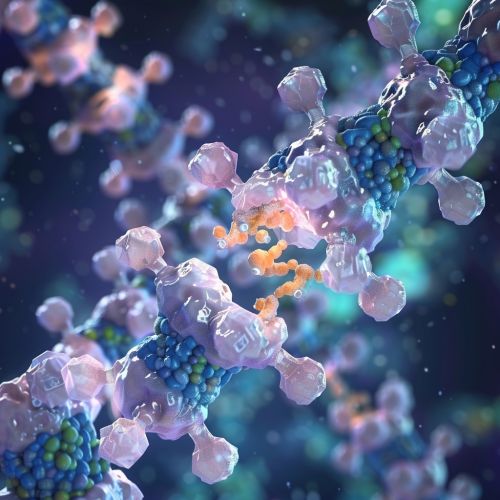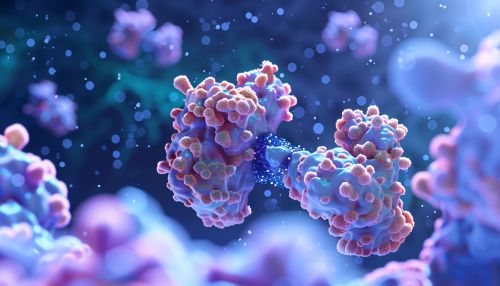GABA A receptor
Overview
The GABA A receptor (GABA_AR) is a pivotal component of the central nervous system (CNS), functioning as the primary inhibitory neurotransmitter receptor. It is a ligand-gated ion channel that mediates the effects of γ-aminobutyric acid (GABA), the chief inhibitory neurotransmitter in the mammalian brain. This receptor plays a crucial role in regulating neuronal excitability and maintaining the balance between excitation and inhibition in the CNS.
Structure and Composition
GABA_A receptors are heteropentameric complexes composed of five subunits that form a central pore. These subunits belong to a large family of related proteins, which include α (alpha), β (beta), γ (gamma), δ (delta), ε (epsilon), θ (theta), π (pi), and ρ (rho) subunits. The most common configuration in the mammalian brain is composed of two α, two β, and one γ subunit. The specific combination of subunits determines the receptor's pharmacological properties, localization, and functional characteristics.


The subunits are arranged around a central chloride ion channel, which opens upon GABA binding. Each subunit consists of a large extracellular N-terminal domain, four transmembrane segments (M1-M4), and a large intracellular loop between M3 and M4. The extracellular domain contains the GABA binding site, while the transmembrane segments form the ion channel pore.
Function and Mechanism
GABA_A receptors mediate fast synaptic inhibition by allowing chloride ions (Cl^-) to flow into the neuron upon activation by GABA. This influx of Cl^- hyperpolarizes the neuron, making it less likely to fire an action potential. The inhibitory effect of GABA_A receptors is crucial for controlling neuronal excitability and preventing excessive neuronal firing, which can lead to conditions such as epilepsy.
The receptor's function can be modulated by various endogenous and exogenous compounds. Benzodiazepines, for example, enhance the receptor's response to GABA by increasing the frequency of channel opening. Other modulators include barbiturates, neurosteroids, and alcohol, which can alter the receptor's function through different mechanisms.
Pharmacology
GABA_A receptors are targets for a wide range of pharmacological agents used in the treatment of various neurological and psychiatric disorders. Benzodiazepines, such as diazepam and lorazepam, are commonly prescribed for their anxiolytic, sedative, and anticonvulsant properties. These drugs bind to a specific site on the GABA_A receptor, distinct from the GABA binding site, and potentiate the receptor's response to GABA.
Barbiturates, such as phenobarbital, also enhance GABA_A receptor activity but through a different mechanism, increasing the duration of channel opening. Neurosteroids, which are endogenous modulators, can potentiate or inhibit GABA_A receptor function depending on their structure.
Clinical Significance
Dysfunction of GABA_A receptors is implicated in various neurological and psychiatric disorders. For instance, mutations in GABA_A receptor subunits have been linked to epilepsy, anxiety disorders, and insomnia. Understanding the role of GABA_A receptors in these conditions has led to the development of targeted therapies aimed at modulating receptor function.
In epilepsy, reduced GABAergic inhibition can lead to hyperexcitability and seizure activity. Enhancing GABA_A receptor function with drugs like benzodiazepines or barbiturates can help control seizures. In anxiety disorders, increased GABAergic inhibition can have a calming effect, reducing symptoms of anxiety.
Research and Development
Ongoing research aims to develop new drugs that selectively target specific subtypes of GABA_A receptors. This selectivity could minimize side effects and improve therapeutic outcomes. For example, drugs that selectively target α2-containing GABA_A receptors may provide anxiolytic effects without the sedative properties associated with non-selective benzodiazepines.
Advances in structural biology have provided detailed insights into the architecture of GABA_A receptors, facilitating the design of novel modulators. Cryo-electron microscopy (cryo-EM) and X-ray crystallography have been instrumental in elucidating the receptor's structure at high resolution, revealing potential binding sites for new drugs.
